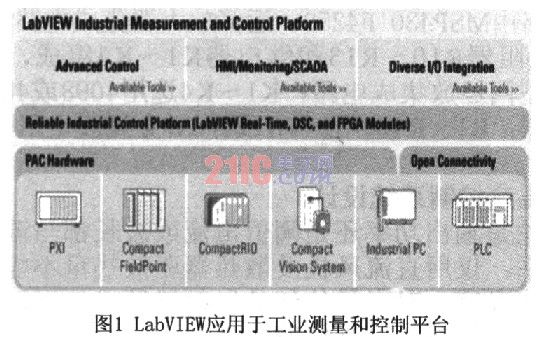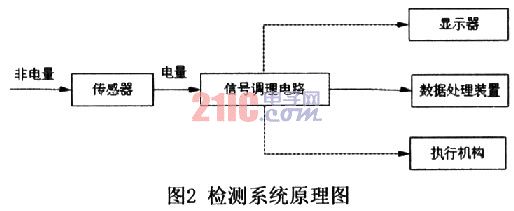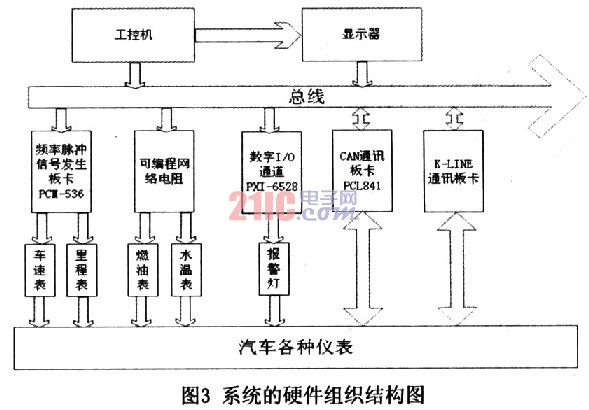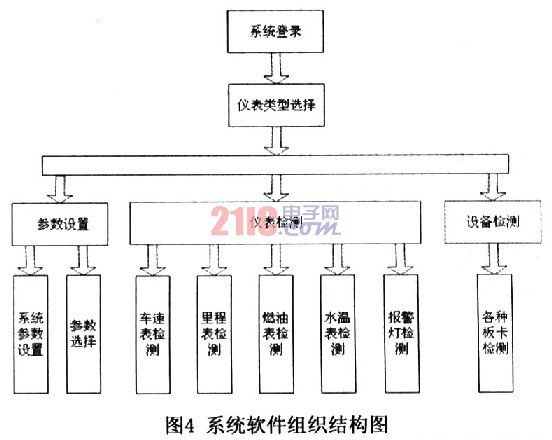Abstract: Virtual instrument technology is a new type of instrument formed by the combination of computer technology and measurement technology in the field of instrumentation. It can complete the tasks that traditional instruments can't accomplish. Based on the characteristics and core technologies of virtual instruments, this paper introduces the application of virtual instrument technology in the field of automotive instrumentation.
Keywords: LabVIEW; automobile; detection
This article refers to the address: http://
O Introduction After more than 30 years of reform and opening up, the automobile industry has developed greatly in China and has its own brand. However, since the founding of New China, the safety inspection line of the automobile industry relied on the national compulsory verification project measurement and verification, and the engineering vehicle was used as a transportation tool. It carried a large number of various vehicle-specific identification instruments to carry out measurement verification of different parameters of the automobile production line instrument. Test it.
In the 1980s, the United States successfully developed a virtual instrument (Visual Instruments, referred to as VI). In China, virtual instrument technology has not been widely popularized, but a large number of colleges and universities have combined virtual instrument technology, especially LabVIEW and scientific research, and have made considerable progress in comprehensive testing of automobile engine test monitoring and vibration analysis. Results. The virtualized test instrument requires only sensors, signal conditioning circuits, DAQs, and PCs. All function keys, displays, and curves can be reconstructed on the display. Its operation is simple, users can easily add and subtract modules, reconfigure existing systems to meet new test requirements, and not lose existing hardware and software resources, but also meet test requirements.
1 Introduction to LabVIEW The virtual instrument was first successfully developed by National Instrument (NI) in 1986. It is a unified hardware platform for computers as an instrument, making full use of the computer's operation, storage, playback, and recall functions. The most representative graphical programming software for virtual instruments is LabVIEW (Laboratory Virtual Instrument Engineering Workbench), which is a graphical programming language for icons to create applications instead of text lines.
The traditional text programming language determines the execution order of the program according to the order of the statements and instructions, while LabVIEW uses the data stream programming mode, and the data flow between the nodes in the block diagram determines the execution order of the program. The LabVIEW program is called a VI (Virtual Instrument) or virtual instrument because many of its interface controls and operations emulate real-world instruments. LabVIEW provides a large library of toolboxes and libraries, and integrates many instrument hardware libraries. LabVIEW supports multiple operating system platforms, and LabVIEW applications developed on any one platform can be directly ported to other platforms.
1.1 Features of virtual instruments (1) Users can define and manufacture various instruments according to their own needs.
(2) Virtual instruments emphasize the new concept of "software is instrument", and software is the core of virtual instrument.
(3) The virtual instrument adopts a modular structure, and each functional module combines to form a virtual instrument system.
(4) It can fully utilize the capabilities of computers and has powerful data processing functions to create more powerful instruments.
(5) The virtual instrument has a graphical user interface that reflects the idea of ​​"what you see is what you get". The control panel of a conventional instrument is replaced in the virtual instrument by a soft panel with corresponding setting options and result output control.
1.2 Virtual Instrumentation Measurements in the Industrial Control LabVIEW provides unparalleled flexibility and ease of use for high-standard industrial measurement, automation, and control applications. Its platform in industrial measurement and control is shown in Figure 1.

2 Automotive Inspection Technology After more than one hundred years of development, the automobile has penetrated into various fields of human activities with its excellent performance and wide application, and has become an indispensable means of transportation in people's lives.
With the rapid development of the automobile industry, especially the advancement of modern electronic technology and computer technology, the development of automobile inspection has become an important discipline, and has been widely used in the fields of automobile manufacturing, automobile use, and automobile maintenance. Automobile detection technology is a technical means that comprehensively utilizes various modern detection technologies and advanced testing equipment to judge the technical condition of the vehicle and identify the fault location and cause under the premise that the vehicle does not disintegrate or is not completely disassembled. The vehicle's power, economy, operational stability, safety, reliability, etc. are tested and analyzed, and provide fair and scientific data.
2.1 Purpose of vehicle testing (1) Safety and environmental testing. Safety and environmental protection testing refers to the inspections carried out on the safety and environmental protection of vehicles regularly and irregularly. The purpose is to establish a safety and pollution monitoring system in the absence of disintegration of the vehicle to ensure that the vehicle has a satisfactory appearance and good safety performance, limit the degree of environmental pollution of the vehicle, and operate it under safe, efficient and low-pollution conditions.
(2) Comprehensive performance testing. Comprehensive performance testing refers to the detection of regular and irregular comprehensive performance of the car. The purpose is to determine the working ability and technical status of the running vehicle in the absence of disintegration of the vehicle, to identify the location or cause of the fault or hidden danger, to implement quality supervision on the maintenance vehicle, and to establish a quality monitoring system to ensure that the vehicle has good safety and reliability. Sex, operational stability, power, economy, exhaust purification and low noise pollution to create greater economic and social benefits.
2.2 Composition of the vehicle monitoring system Most of the parameters of the car are mostly non-electric. The detection of non-electricity is mostly carried out by electric measurement method, that is, firstly converting various non-electric quantities into electric quantity, and then performing a series of processing such as signal conditioning circuit to display non-electrical parameters, and the measurement principle is as shown in FIG. 2 . .

The sensor is the input of the detection system, which converts the measured non-electricity into electricity. The function of the signal conditioning circuit is to process the non-electricity collected from the sensor through a certain process to transform it into a voltage, current or frequency signal with a certain power, so as to promote the display circuit and data processing circuit of the latter stage. Executive agency. The voltage and current signals sent by the data processing or signal processing device are displayed through the display. The data processing device is used to analyze, operate, and process the results obtained by the test. The actuator refers to electrical equipment that controls, switches, regulates, and protects various servo motors, electromagnets, and relays in the circuit.
3 virtual instrument application in the car
3.1 Application of virtual instrument in automobile instrument detection In the mass production of automobile instrument, another problem is brought about, that is, the inspection problem of finished product. The instrument assembly is the information center of Hyundai Motor. Its production quality is related to the safety of the car and the quality of the whole car. Due to the replacement of automobile instruments, new products are constantly appearing and old instruments have not been withdrawn. How to design a test device that can be used for various types of instruments has become an important and extremely important in the detection of automobile instruments. A topic of practical significance.
Through the NI software and hardware products, the entire inspection system is designed. According to the various signal parameters such as analog, digital, switch, K-Line, CAN, etc. required by the instrument test, NI PXI series boards, Zhongtai's The PCM-536 and the self-made programmable network resistor and data communication conversion card form the hardware circuit part of the system. Based on this, NI LabVIEW software is used to design the entire test system. The ultimate goal is to develop a compact, flexible and reliable portable detection system. In the automotive instrumentation test, it can simulate most models. The various acquisition signal information required by the instrument, and communication with the instrument under test through the CAN interface, real-time feedback of the vehicle status information.
(1) The hardware system of the automobile instrument test system mainly includes industrial computer, digital I/O channel PXI-6528, signal junction box, data communication conversion board (here we use the model PCL-841CAN communication board), self-made The main parts of the programming network resistance, power supply and various instruments of the detected vehicle are shown in Figure 3.

(2) The test platform is divided into two parts: one part is the switch button of various module function test: the other part is the display interface of the analog car dashboard, such as speedometer, tachometer, water temperature meter, fuel gauge, mileage indicator and Various alarm and switch signals are displayed. The instrument detection system software is designed by NI LabVIEW platform. This system uses LabVIEW-EW graphical programming language to establish a front panel man-machine interface and block diagram in a very intuitive way. The organization structure is shown in Figure 4. Show.

Through the NI LabVIEW software platform, the entire test system is designed. It has been proven not only to reduce production costs, improve inspection efficiency, ensure product quality, but also a complete automotive intelligent digital instrument detection system. Universal automotive instrumentation inspection system.
3.2 Application of Virtual Instrument in Automotive In-Car Test System (IVDAS) The Automotive In-Car Test System (IVDAS) is one of the most common automotive electronic test applications, superior to traditional in-vehicle test systems, and traditional in-vehicle testing. The system uses a separate data logger to record only general data and alarms, while IVDAS records and analyzes various sensor signals in the car, as well as the reliability, portability and development of the test system. Claim.
American B&B developed IVDAS based on NI LabVIEW and PXI/SCXI. The system shows the flexibility of virtual instrumentation in the test field. Various signal conditioning modules are embedded in the SCXI chassis. The mode of the module is determined by the type of signal. The integration of various signal acquisition and processing is done by the LabVIEW program. The superiority of IVDAS is the flexibility and scalability that comes with the use of PIX and SCXI. Possible upgrades include enhanced touch screen capabilities, speech synthesis, speech recognition, motion control, GPS acceptance and central control units.
The B&B test system in the United States shows the flexibility of virtual instrumentation in the field of automotive testing. Based on the above flexibility, IVDAS can completely replace the traditional data logger.
4 Summary With the further development of detection technology and computer technology, virtual instrument technology will be more applied in the field of testing. This article is mainly based on NI LabVIEW and PXI series boards and other software and hardware. Thanks to LabVIEW's graphical programming platform, users can build a suitable automotive test system in a short period of time according to their own needs. It not only reduces the development and debugging cycle of the system, but also the rapid generation of executable programs, and also greatly reduces the cost of the detection system.
Scsi Connector,Half Pitch Scsi Connectors,Scsi Lead Half Pitch,Scsi Cables
SHENZHEN ANTENK ELECTRONICS CO,LTD , http://www.antenk.com